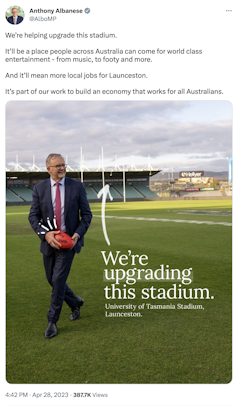Job creation isn't always a good thing. Hobart's new stadium can only make Tasmania's housing crisis worse
- Written by John Quiggin, Professor, School of Economics, The University of Queensland

The Albanese government’s announcement it will provide $240 million for a new stadium in Hobart has not had the favourable reception it might have hoped.
Those concerned with the proper operation of the federal system can point out that this kind of funding is the concern of state and local governments.







